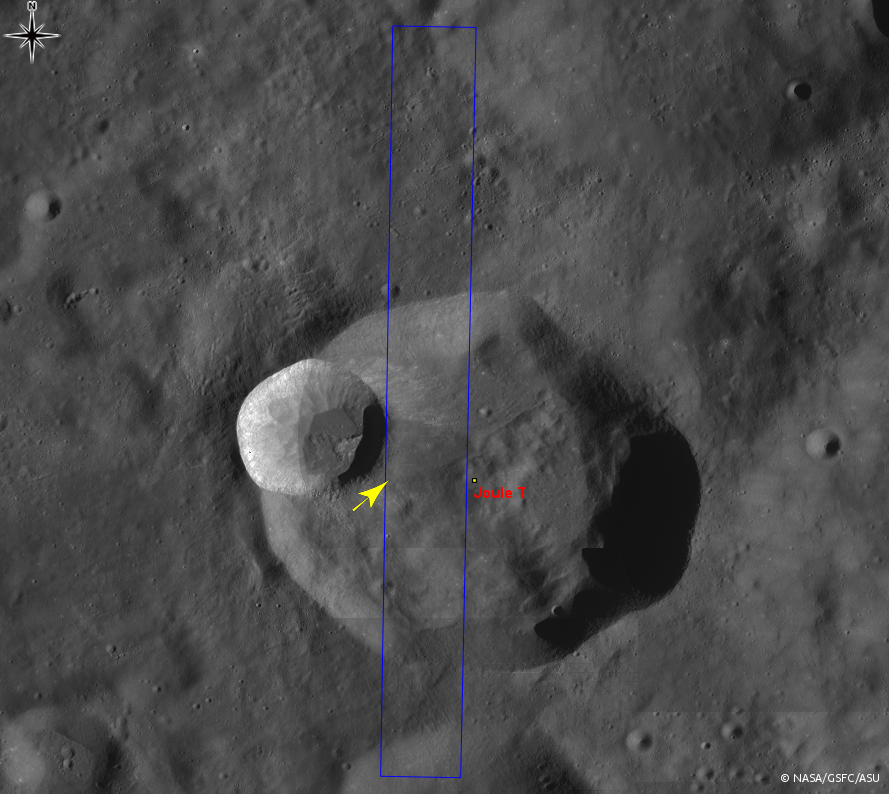
Today's Featured Image highlights a portion of an impact melt sheet that splashed from an unnamed crater about 13.5 km in diameter. This unnamed crater formed on the western rim of a crater nearly three times its size, Joule T (38 km in diameter). In context mosaic below, a yellow arrow indicates a slightly darker region within the blue box, which corresponds to this impact melt sheet. The extent of this melt is about 48 km2.
The narrow lineations extending from upper-left to lower-right indicate the flow direction of the melt, and likely consists of multiple flow lobes. You can also see some regions, like those near the top of the image, where flows were wider and end in round lobes. Depending on multiple factors such as the underlying slope, ejection speed, and viscosity of the melt, impact melts exhibit a wide variety of the surface patterns and morphologies. The melt here appears to have flowed at a high velocity, probably because the crater formed on the relatively steep slope of Joule T's wall.
Explore these fascinating impact melts in Joule T crater floor in full NAC frame yourself!
Related posts:
Dynamics of Molten Rocks, Splash Mark, Scalelike Impact Melts, Herigonius K Impact Melt Flow, Splash and flow
Published by Hiroyuki Sato on 19 February 2013
